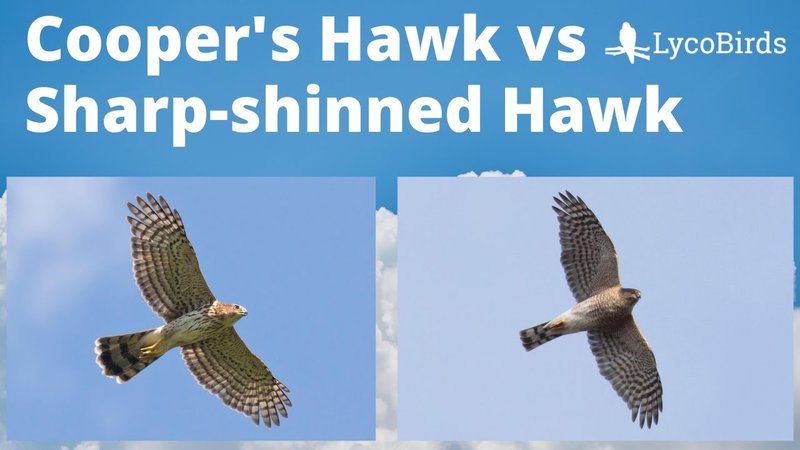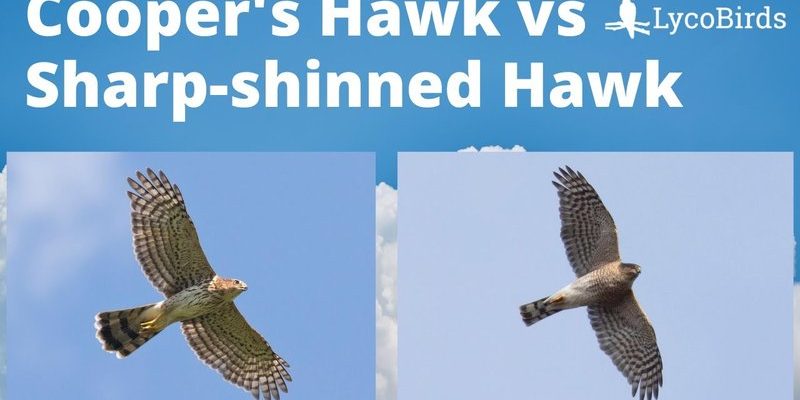
Let’s think of it like this: identifying a Cooper’s Hawk is like getting to know a friend; it takes a little observation and understanding of their quirks. You’ve got to pay attention to their size, markings, and behavior, and soon enough, you’ll feel confident recognizing them in the wild. Each detail tells a story, and understanding these nuances can bring a whole new joy to your outdoor adventures.
What Does a Cooper’s Hawk Look Like?
The first step to identifying a Cooper’s Hawk is to understand its physical characteristics. These birds are medium-sized raptors, typically ranging from 14 to 20 inches in length. A good way to picture them is to think of a crow but sleeker and more streamlined.
Their distinctive features include a rounded tail that often has a banded appearance. The adult Cooper’s Hawks generally have a more bluish-gray back and a reddish-orange barring on their chest. If you catch a glimpse of a juvenile, they’ll look quite different, sporting a brown-and-white speckled pattern.
You might be wondering about size differences. Males tend to be smaller than females, which is a common trait in raptors. Males average around 14-16 inches, while females can stretch up to 20 inches. This size difference is an essential detail to keep in mind when you’re trying to identify these birds.
Where to Look for Cooper’s Hawks
Cooper’s Hawks are adaptable birds, and their habitat preferences can help you find them. You’ll typically spot them in wooded areas, parks, and even in suburbs where tall trees are present. They tend to favor edges of forests or places where they can easily chase after their prey.
Look for them soaring or perched high in trees, especially during late winter or early spring when they are most active. You might even catch them hanging around bird feeders—yes, they like to snack on smaller birds! Imagine sipping your morning coffee and suddenly spotting one from your window; it’s the kind of delightful surprise that makes nature watching so rewarding.
If you’re in a more open area, like fields, keep an eye out for them gliding low to the ground. They have a remarkable ability to navigate through trees with speed and skill, so if you see a blur darting through the branches, it just might be a Cooper’s Hawk on the prowl.
Understanding Their Behavior
Watching how a Cooper’s Hawk behaves can provide essential clues for identification. These birds are masters of stealth, often launching surprise attacks on their prey, which usually includes smaller birds. Their hunting style is quick and direct, so keep your eyes peeled for fast, darting movements.
You might see them swoop down from a perch to catch unsuspecting birds at feeders. If you’re patient, you could witness this spectacle. Their flight is characterized by a series of rapid, flapping wingbeats followed by brief pauses with outstretched wings—an impressive sight!
Another behavioral trait to notice is their vocalizations. Cooper’s Hawks have a distinctive call that sounds like “kak-kak-kak” and is often heard during mating season. If you hear this sound echoing through the trees, it’s a solid sign you might be near one of these fascinating hawks.
Distinguishing Cooper’s Hawks from Similar Species
You might stumble upon some confusion when identifying Cooper’s Hawks due to their resemblance to other hawks, particularly the Sharp-shinned Hawk. Here’s the thing: while they may look similar, you can distinguish them with a few key differences.
Cooper’s Hawks have a larger, chunkier appearance compared to the more slender Sharp-shinned Hawk, which is about the size of a pigeon. Additionally, the tail of a Cooper’s Hawk is broader and more rounded, while the Sharp-shinned Hawk has a squared-off tail.
When it comes to markings, adult Cooper’s Hawks have a more pronounced reddish-brown breast, while the juvenile Sharp-shinned is more speckled. If you’re unsure, take a moment to observe their behavior and size, which can help clarify which hawk you’re looking at.
Tips for Observing Cooper’s Hawks
Now that you’re familiar with the features and behaviors, let’s dive into some practical tips for spotting Cooper’s Hawks in the wild.
– Be Quiet and Patient: The best way to observe these birds is to blend into your surroundings. Find a comfortable spot and keep still. If you make too much noise, you’re likely to scare them away.
– Use Binoculars: A good pair of binoculars can enhance your viewing experience tremendously. You’ll be able to catch those finer details that will help in identification. Look for their unique markings or behavior as you scan the treetops.
– Join a Birding Group: Connecting with others who share your interest in birdwatching can be incredibly valuable. Experienced birders can help you spot Cooper’s Hawks and give you insights into their habits.
– Keep a Journal: Documenting your sightings can add a fun element to your birdwatching routine. Note the date, location, and any unique behaviors you witness.
Remember, the thrill of birdwatching often comes from the unexpected. Sometimes you might get lucky and see a Cooper’s Hawk in action, while other times it’s the quiet moments that make it all worthwhile.
Why Identifying Cooper’s Hawks Matters
Understanding how to identify a Cooper’s Hawk isn’t just a fun hobby; it plays a vital role in conservation and ecological awareness. By being able to recognize these birds, you contribute to citizen science—you become part of the effort to monitor local wildlife populations.
Moreover, knowing your local wildlife can deepen your appreciation for nature. It helps you understand the delicate balance of ecosystems. When you spot a Cooper’s Hawk, you’re witnessing a predator that plays a crucial role in controlling populations of smaller birds, thus maintaining the health of its environment.
Next time you’re outside, look up! You might just spot a Cooper’s Hawk soaring high overhead or perched quietly in the branches. Engaging with nature in this way can enrich your life and strengthen your connection to the world around you.
In conclusion, identifying a Cooper’s Hawk in the wild involves paying attention to their unique features, behaviors, and habitats. Whether you’re a beginner birdwatcher or a seasoned pro, the joy of spotting these incredible birds is an experience you won’t want to miss. So grab your binoculars, head outside, and let nature reveal its wonders!

